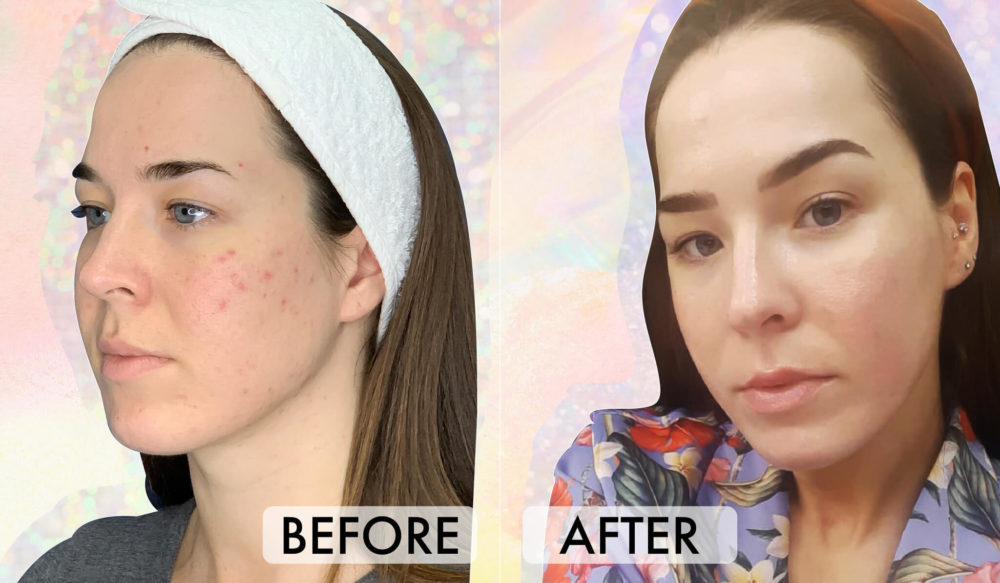How To 'Cycle' Your Skin Routine For Max Results (& Zero Irritation)
 via Giphy
via Giphy
Beauty trends come and go, but some are definitely more worth holding onto compared to others. For example, you’ll never be able to pry our retinol creams out of our hands, and we’re all about a refreshing double cleanse. “Skin cycling,” pioneered by dermatologist Dr. Whitney Bowe, is a newish skincare routine approach that’s receiving lots of love in the social media sphere rn, and we think it might just land itself in the “here to stay” category.
What is Skin Cycling?
Skin cycling is a skincare routine that follows a four-day rotation. The first night you exfoliate with an AHA/BHA, the second night you apply a retinoid, and then the following two nights are a “recovery” period where you focus on hydration and barrier repair. Then you start over again. You’re still cleansing and moisturizing on the first two nights, but those days involve treatments that help refine your skin tone, texture, and firmness.
The Regimen:
View this post on Instagram
The idea is to make sure your skin is getting everything it needs to look glowy and healthy, but to not overdo it or make things too complex.
“Skincare routines have become so overly complicated and confusing, and people aren’t getting the results they want – or even close,” says Dr. Whitney Bowe, who came up with the regimen herself. “People were taking a kitchen sink approach to their skincare, mixing and matching ingredients that simply don’t play well together! Skin cycling takes a ‘less is more’ approach by being thoughtful and deliberate about your skincare routine.”
Dr. Marisa Garshick, a leading board-certified dermatologist at Manhattan Dermatology and Cosmetic Surgery and advisor of BioRepublic, is also a fan of this cycling approach. She adds that it’s an excellent way to prevent irritation and sensitization while getting the most out of your product. Best of all, she says, “Skin cycling is a practice that you can incorporate into your skincare routine long term.”
Posts You'll Love:
What Results Can You Get From Skin Cycling?
View this post on Instagram
Dr. Bowe, who’s treated literally thousands of patients over the last decade, says she’s found that simple and effective products – used in a strategic way – is simply the way to go. “While guiding my patients through the process of skin cycling, it became clear that the concept was changing their skincare game,” Dr. Bowe says. “So, I introduced it to my social media community in the Spring of 2021, and now it has taken on a life of its own – and that’s because it works.”
After repeated two cycles, Dr. Bowe says you’ll likely see a reduction in irritation, blotches, redness, and sensitivity. Your skin will also appear more hydrated and should feel softer and bouncier. The real sweet stuff happens when you stick with it, though. Over three to six months, you’ll start to notice an improvement in stressed skin and signs of aging, including fine lines, wrinkles, and hyperpigmentation.
Can Anyone Try Skin Cycling?
Anyone can benefit from the skin cycling approach. It’s really about finding the products that work best for your skin. However, there are a few considerations:
Curious about retinoids? Check out our ultimate guide on using retinol, then take a sec to learn about encapsulated retinol and retinol alternatives for sensitive skin.
Disclaimer: Every product we review has been independently selected and tested without bias by our editorial team. Although some brands allow affiliate links, we never take payment to review products, so we may earn a commission if you purchase a product by clicking on one of our links.























Leave a comment